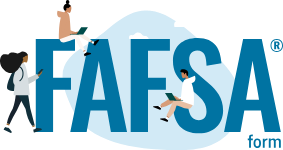FAFSA Simplification Act
The FAFSA Simplification Act was passed by Congress in 2021 and signed into law. The act required the Department of Education to make significant changes to the Free Application for Federal Student Aid (FAFSA) form, updated the calculation of financial need, and revised many of the policies and procedures for colleges and universities that participate in federal student aid programs.
What to know
The 2024-2025 new FAFSA form was launched by the Department of Education on December 31st, 2023.
- The Student Aid Index (SAI) will replace the Expected Family Contribution (EFC). There is a minimum SAI of -1500, and the new FAFSA process implements separate eligibility determination criteria for Federal Pell Grants.
- The revised FAFSA will have fewer questions, less requirements and will be easier to complete.
- The FAFSA Simplification Act will expand the Federal Pell Grant to more students by linking eligibility to family size and federal poverty levels. The new need analysis formula removes the number of family members in college from the calculation, but this should not impact most students, as the new calculation will consider the entire makeup of the family as part of the index.
- With the streamlined FAFSA, questions regarding Selective Service and drug convictions will be removed.
- Both students and parents/guardians who are required to file a US tax return must approve and consent for the IRS to provide tax information directly to the Department of Education through a direct data exchange with the online FAFSA application.
How to prepare
- Both students and parents must have an FSA ID to complete the FAFSA.
- If you have previously filed an FAFSA application, your same FSA ID and password will be used for the new FAFSA.
- If you do not have an FSA ID and password, apply for one now.
- Tax information for the 2024-2025 FAFSA will be for the 2022 year. Make sure that the 2022 federal tax return has been filed (by student and or parent if required to file). Who needs to file?
- Check out the Federal Student Aid Estimator Tool to find out how much federal student aid a student may be eligible for starting with the 2024-2025 award year.
- Review these helpful videos to understand what to expect with the new changes.
Changes in terminology
Contributor - refers to anyone who is required to provide information for a student's FAFSA form (student, parent, student spouse, adopted parent or parent's spouse).
Student Aid Index - the SAI will replace the Expected Family Contribution (EFC). This new formula will be used to determine a student's eligibility for federal Pell Grant and other need-based aid.
FTI (Federal Tax Information) - both students and parents will need FTI from 2022 to complete the 2024-2025 FAFSA.
Consent - all contributors (student, parent/guardian, etc.) will be required to provide consent for tax information to be securely downloaded from the IRS to the Department of Education for the FAFSA form. Failure to provide consent will make the student ineligible for FAFSA completion.

